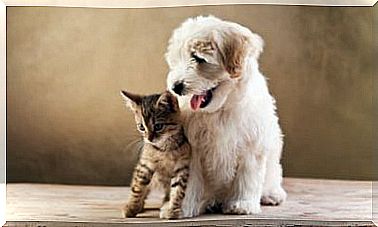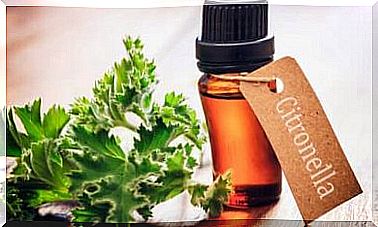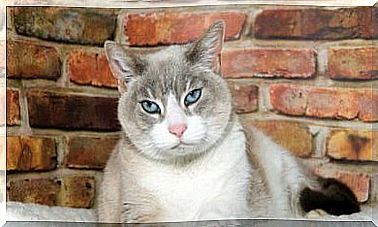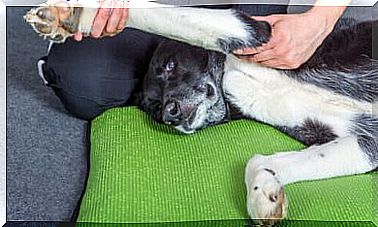Causes And Prevention Of Cat Toothache
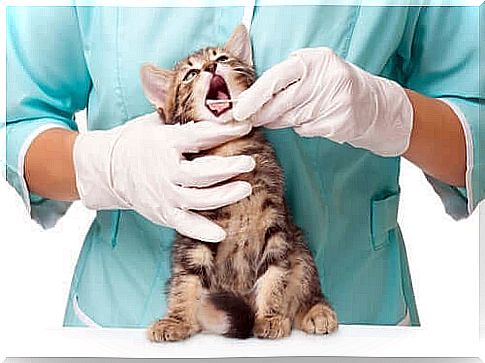
A cat’s toothache can be caused by several reasons. These cats, as well as other domestic animals such as dogs or ferrets, can suffer from diseases located in the oral cavity. This results in the destruction of teeth and other oral tissues.
Like any other pathology, oral diseases are very uncomfortable and painful. Also, if they are not treated, our pet can stop eating and develop other problems.
Dental Peculiarities of Cats
Cats are ring-shaped animals – teeth with limited growth – diphiodon, as they have two dentition – one permanent and the other deciduous – and brachydons. That is, their teeth have a well-differentiated crown and root.
The dental formula of these animals is composed of 12 incisors, 4 canines, 10 premolars and 4 molars, reaching a total of 30 teeth when adult. A notable feature of feline dental anatomy is the absence of the maxillary first molar and mandibular first premolar.
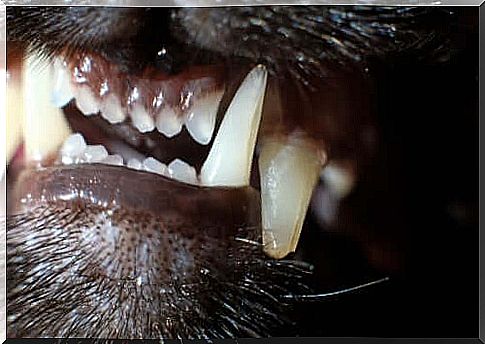
In addition, cats have salivary glands located close to the first molar. This can lead to a predisposition to build up of tartar and bacteria.
What Causes Toothache in a Cat?
Oral pathologies in felines can have various origins, such as bacterial infections, age, genetic predisposition, eating and behavioral habits, etc.
Most of these diseases are preventable as long as we monitor our pet’s oral health. We must be on the lookout for any changes it may introduce.
dental fractures
Cats with access to the outside world are more likely to suffer falls, blows, or get into fights that can end with a broken tooth. This may seem like an insignificant event, but if the pulp of the tooth is compromised, infection can occur. If this happens, a root canal should be performed as soon as possible. Otherwise, the affected tooth must be extracted.
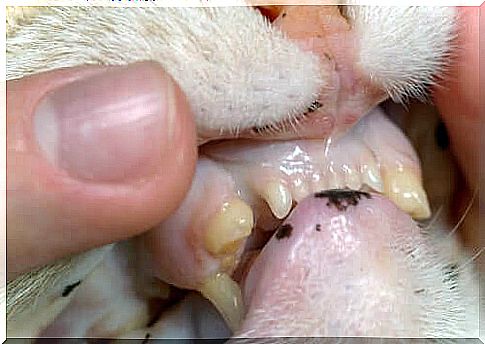
cat periodontal disease
Periodontal disease develops in two stages: gingivitis and periodontitis. In the first case, there is inflation and congestion of the gums. It is the initial stage of the disease and its state is reversible. In the second stage, this inflation evolves until it destroys the tooth support and involves the marginal gingiva, periodontal ligament, cementum and alveolar bone of the tooth. Once this stage is reached, the pathology becomes irreversible.
This condition starts with the build-up of tartar between the teeth and the gums, which causes bacteria to proliferate on the tooth’s surface. Therefore, it is at this point that we must act and perform a thorough oral cleaning.
In addition to inflammation of the gums, this disease can cause other symptoms:
- Calculation and plaque deposit.
- Bleeding.
- Gingival retraction.
- Formation of periodontal pocket.
- Dental mobility.
- Tooth loss.

Feline Resorption Injury
Feline odontoclastic resorption injury (LROF) primarily affects the cat’s teeth. It consists of the disappearance of the tooth and its progressive replacement by a granular mass.
This pathology is little known and it is believed that, in many cases, it is underdiagnosed. On the other hand, its origin is also under debate, and its possible causes are:
- Gingivitis.
- Low calcium diets.
- Diet with excess vitamin D.
- Industrialized diets with acidic pH.
- Gastric reflux acidity in hairball regurgitation.
- Possible viral etiologies, such as feline immunodeficiency virus, feline leukemia virus, calicivirosis, herpesvirus or actinobacillosis etiologies.
Tips to Prevent Cat Toothache
The first steps we must take to prevent cat toothaches are to provide healthy, quality food. In dogs, for example, it has been shown that the recreational use of raw bones – always under supervision and for short periods of time – significantly reduces the accumulation of tartar on teeth. This is the number one cause of dental problems.
It is very important to take our cat to the vet regularly and have his mouth examined. Acting in this way will initially detect pathological signs, which will improve the diagnosis and treatment of various diseases.
On the other hand, if the cat allows, the ideal would be a daily brushing of teeth, in addition to the use of specific mouthwashes for the species. Likewise, the feeders and drinkers they use must always be clean: it is advisable to scrub them daily to avoid bacterial growth.

